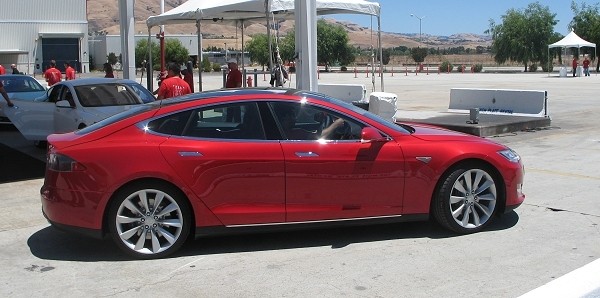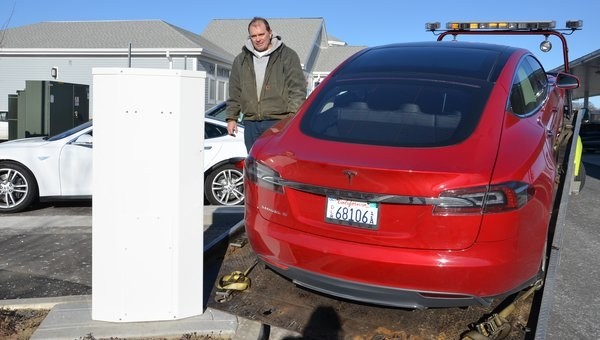The New York Times recently published an article featuring Tesla's new Model S electric car. To say the author's experience with the car went poorly would be an understatement - he ultimately had to have the vehicle towed as it ran out of juice between charging stations, or so he claims.
Tesla supplied John Broder with a Model S for a trip down Interstate 95 that started in a Washington D.C. suburb. By his own account, the journalist started with a full charge and was able to make it to the Delaware charging station with roughly half of his battery remaining. He stopped in for a recharge and 49 minutes later, he says the display read "charge complete" with an estimated driving distance of 242 miles.

As Broder entered into New Jersey, however, he began to notice the battery level was dropping faster than the miles accumulated. He started to follow Tesla's recommended maximum range guidelines that includes battery-saving techniques like disabling the car's cabin heater and driving slower.
He made it to the next station, recharged a bit then drove another 79 miles to spend the night. When he shut the car off, the mileage estimate read 90 miles of range left. When Broder awoke, that figure dropped to 25 miles - not quite the 46 miles he needed to reach a recharging station.

Long story short - he didn't make it to the next station and had to call for a tow truck. He cites the extremely cold northeast weather - 10 degrees at one point - as the culprit for the poor battery life.
Tesla CEO Elon Musk, on the other hand, said the article about the Tesla's range in the cold weather was fake. He said vehicle logs tell the true story and that the reviewer didn't actually charge to the max and he even took a long detour. In an interview with CNBC, he said he believed the article was a bit of a setup and was pretty unreasonable.
For their part, the Times released a statement saying the article was completely factual and any suggestion to the contrary was flatly untrue. Regardless of whether or not the article was intentionally negative, shareholders quickly took notice. Stock value in the electric car company closed down more than two percent yesterday, one of the largest single-day declines since late last year.